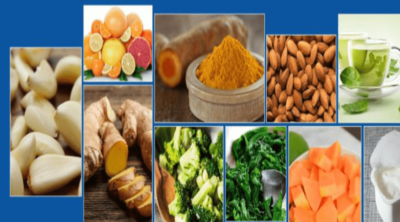
Nothing beats the taste of a delicious, sweet, and thirst-quenching watermelon. Watermelons are usually deep pink or red color inside. But did you ever cut a watermelon and find it’s yellow inside? Yes, it is possible! This NutriNeat article helps you find out more about yellow watermelon and its nutrition.
|
Did You Know?
There are more than 1200 varieties of watermelon, and they come in various shapes and sizes with different colors such as red, orange, yellow, and white. They are grown in over 96 countries worldwide. |
Imagine yourself cutting an orange only to discover that it is purple from inside, or biting into an apple that’s blue inside. You may freak out and think a hundred times before eating it, right? Well, that’s what you may feel like if you eat Yellow Watermelon for the first time.
Yes, yellow! We are used to seeing and eating watermelon that has a reddish-pink flesh inside. One must definitely try it because it is really delicious and healthy. It makes a great addition to your diet or fruit salad.
Let’s get to know it better…
About Yellow Watermelon
Description and Taste
The yellow watermelon is also called Yellow Flesh or Yellow Crimson. It is an almost identical twin of the reddish-pink-fleshed watermelon. It has the same two-toned green skin. It has a honey-like taste and is much sweeter than regular watermelons. The flavor also depends on the conditions in which they are grown. It is available in both, seeded and seedless, varieties. The average weight of yellow watermelon is 10 – 13 pounds.
Why is it yellow?
Regular watermelons, with a reddish-pink flesh inside them, contain a powerful antioxidant called lycopene, which is also present in tomatoes and gives them the red color. Lycopene is a bright red carotene and carotenoid pigment that is normally found in red fruits and vegetables. Yellow watermelons do not contain this powerful antioxidant because of which they have a yellow flesh inside them.
Genetically Modified?
No, they are not! They are actually a result of plant breeding experiments which do not reproduce more watermelon. They are not as common and available as their reddish-pink twins. They occur naturally and are actually older than the regular ones. The yellow versions are said to have originated somewhere in the wild South African region.
Climatic Conditions
Yellow watermelons grow all year round. They are mainly grown in California and Arizona between the months of May and October. They grow best in hot, humid conditions and in sandy soil. They are warm-season fruits that thrive best in temperatures of about 70°F – 85°F (21°C – 29°C).
Uses
Yellow watermelon is sweet, and can be eaten and served in many ways. In some regions, it is served with feta cheese or other salty items. The watermelon rind is usually fried or made into tender pickles. They are famously used in making smoothies, cocktails, salsa, muffins, or a healthy salad. They can be had anytime, especially, if you are trying to lose weight. A bowl or two of watermelon is really filling without making you feel deprived and a better way to stay within the caloric range.
Nutritional Value
| Calories | 46 |
| Total Fat | 0 g |
| Cholesterol | 0 mg |
| Sodium | 2 mg |
| Potassium | 5% |
| Carbohydrates | 12 g |
| Protein | 1 g |
| Vitamin A | 18% |
| Vitamin C | 21% |
| Calcium | 1% |
| Iron | 2% |
| Water content | 92% |
So, now you know that this watermelon looks just like any other watermelon from the outside. People often get tricked into thinking it to be a regular watermelon. I know what you’re thinking of! It may actually work as a good little prank on your mother, brother, or sister. Substitute the traditional watermelon with one of these and enjoy watching them cut into it for the first time (*evil laugh*). Okay, maybe it’s not that funny to everyone, but I would sure get a chuckle out of it!

